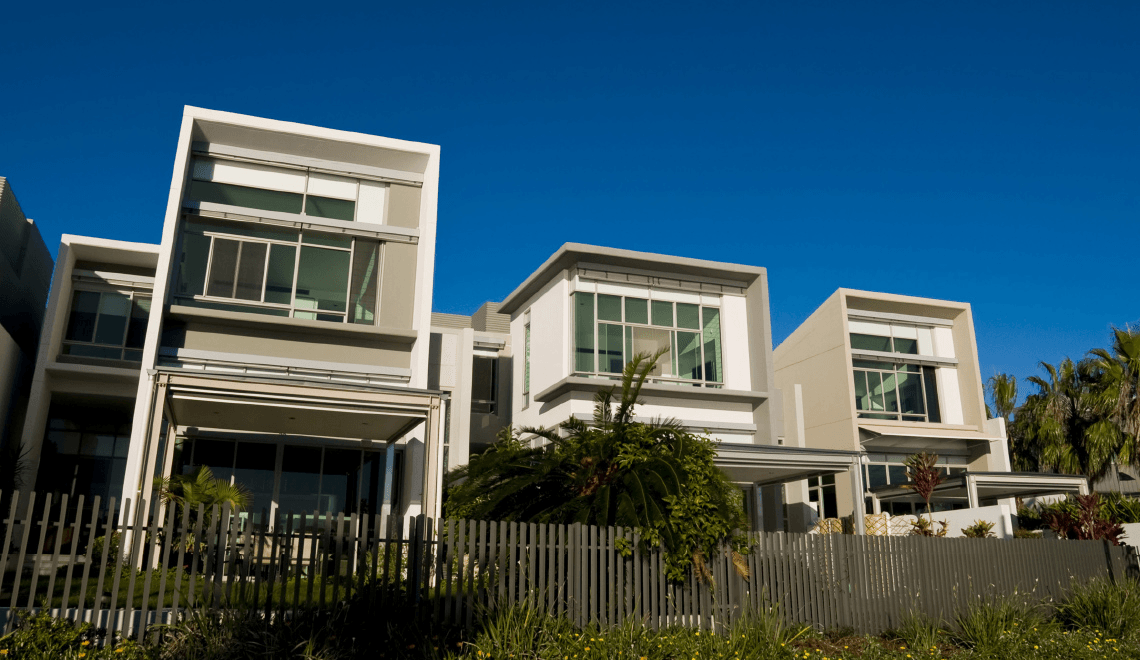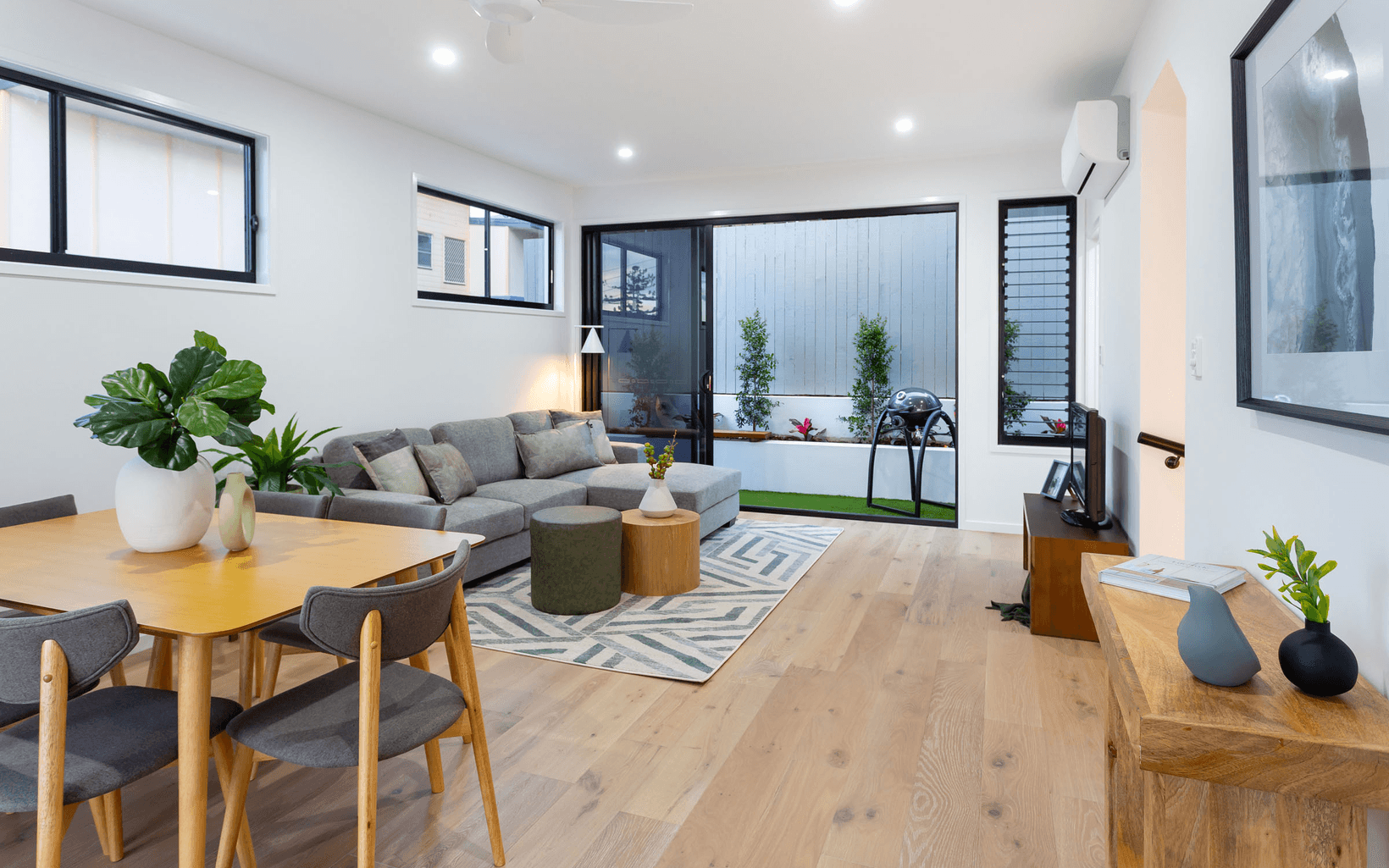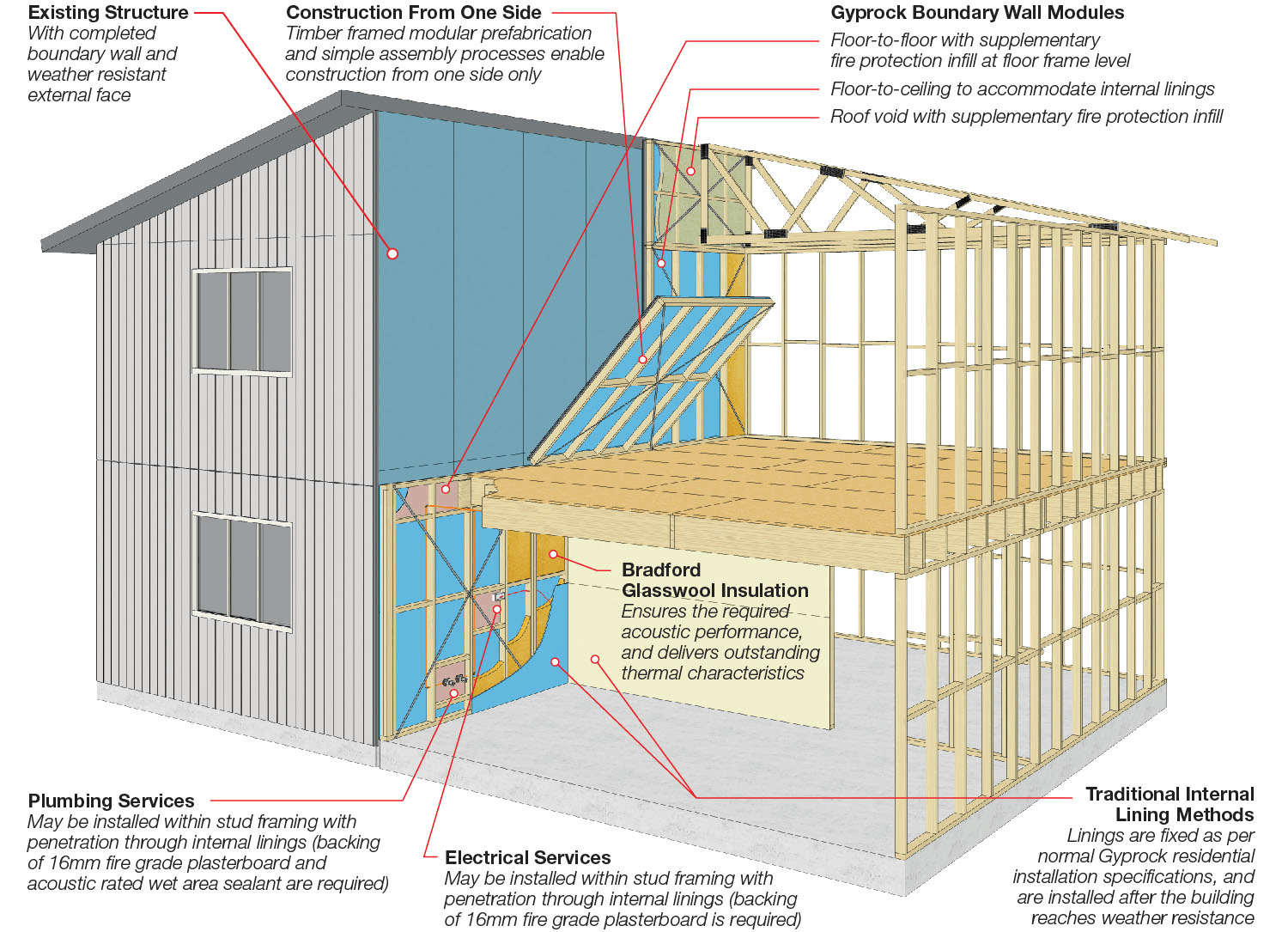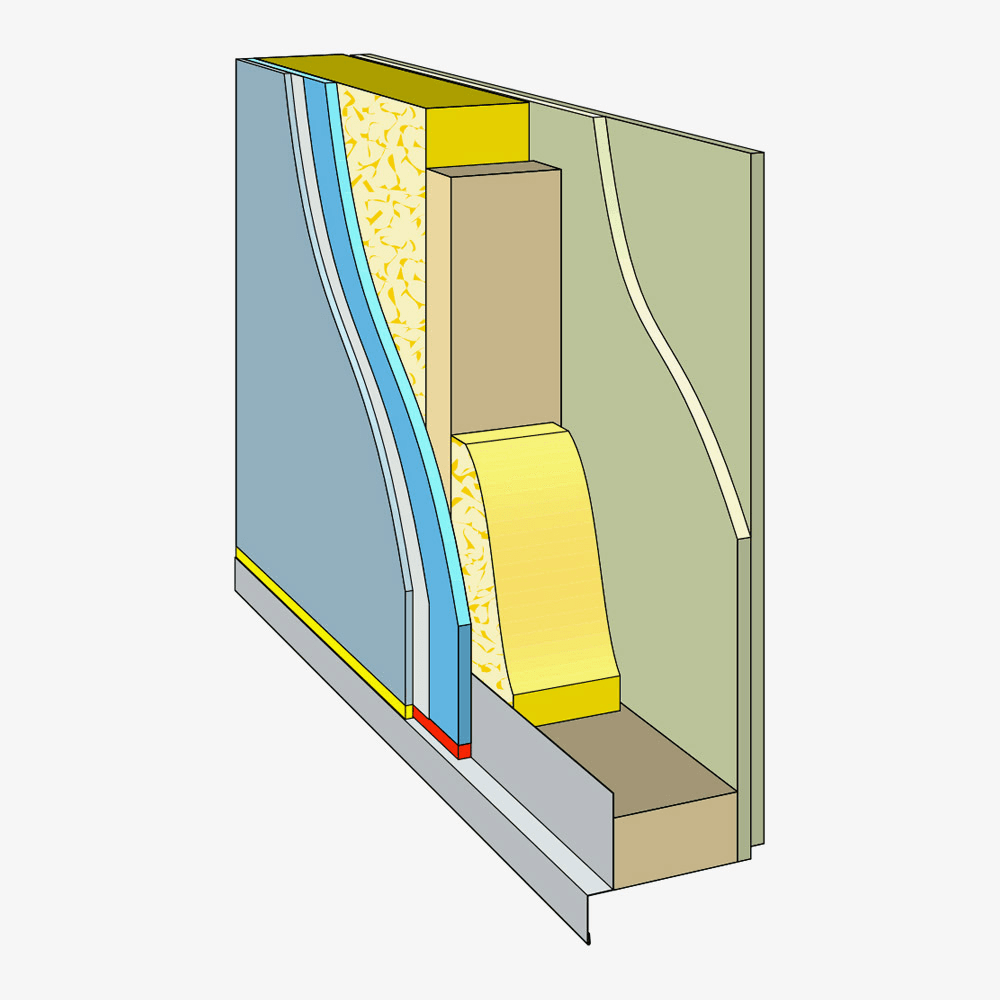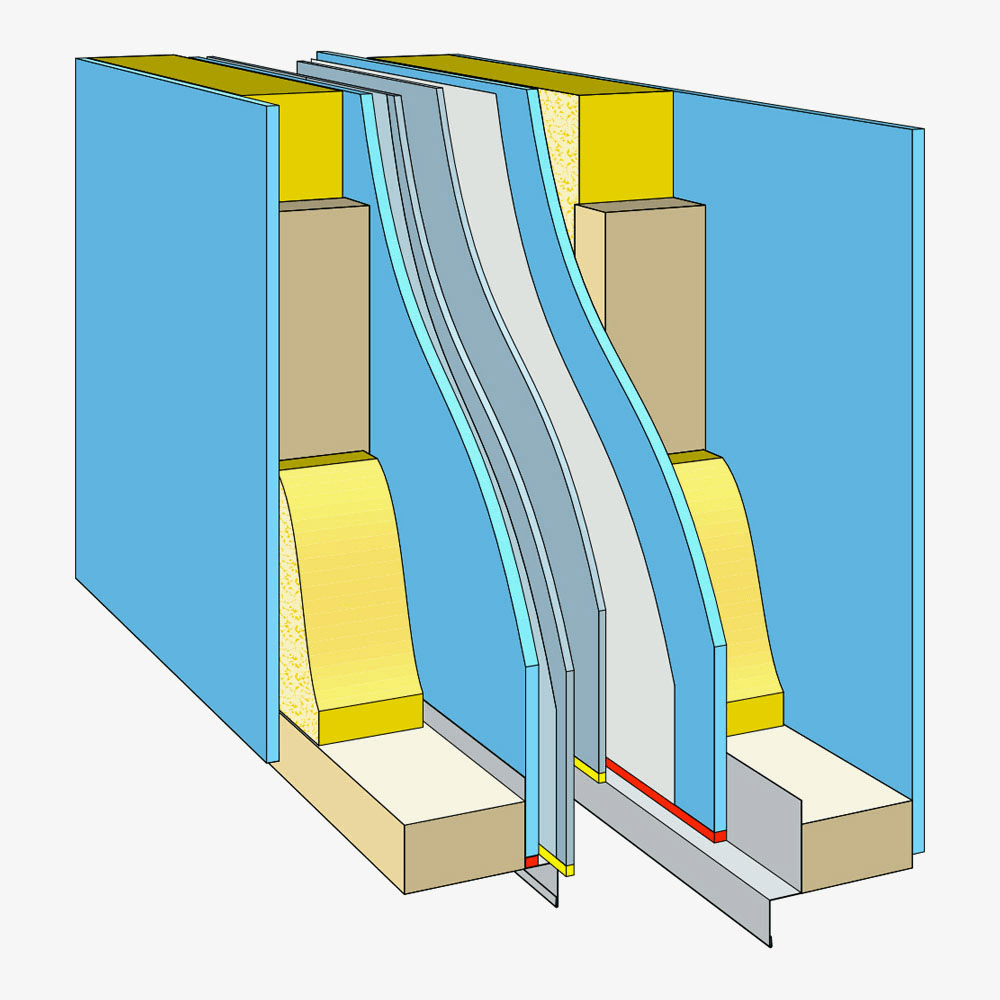Gyprock Boundary Wall systems have been developed specifically to meet the needs of developers and builders of high density Class 1a buildings.
These systems evolve, if and when required, from a single boundary wall into a double boundary wall system that performs like an inter-tenancy wall, allowing for non-sequential development of attached dwellings.
Traditional construction methods require an entire 'block' of attached dwellings to be built as one, with the inter-tenancy walls lined as interior walls, after the roof and exterior walls are completed. With the Gyprock Boundary Wall system, individual units can be completed before the construction of adjoining units.
Applications
Gyprock Boundary Walls are intended for use in the staged construction of adjacent Class 1 buildings. These typically include, terrace houses, town houses and villa developments as well as single houses built on the boundary line with restricted access from an adjoining property.
Loading component...
System Performance
Gyprock Boundary Wall Systems provide the fire rating, thermal performance and weather resistance properties required by the BCA for external walls. With the addition of a second wall system, they also meet the acoustic requirements for an intertenancy wall.
Loading component...
Loading component...
System Design
These diagrams show three typical layout options for the StrataWall system. The Gyprock Red Book outlines a comprehensive list of layout options and can help you find a design that works best for your building performance needs.
